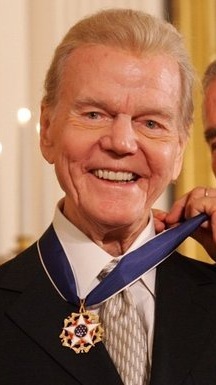
These last several years, we’ve been witness to a lot of trends. Thanks to social media and what are known as “influencers,” many of the things we now embrace have been accelerated by the power of the online crowd.
“What’s Trending?” is a question we frequently ask, and thanks to our constant connectedness, it’s not hard to figure out on any given day what people are “talking” about on outlets like Twitter and other social sites. Hashtags have made it easy to hop on, dig in, or simply observe a phenomenon as it “goes viral.”
As a researcher and a programmer, I’m constantly on the lookout for trends that will affect the radio audience (which is pretty much everybody), as well as how personality shows can reflect these pop culture spikes on the air and online.
What’s a “trend?” There are many definitions, but I like this one that appeared in an NPR opinion piece by Lincoln Weeks nearly a decade ago:
“A trend is a prevailing tendency that is gradually gaining momentum and might have long-term implications. It’s different from a fad, which is a short-term burst of interest or way of being.”
So, using that definition, I’m seeing what appears to be a trend (although some will always call it a fad) that’s been prevalent in our culture for a long time now, but seems to become more dominant and present during difficult times.
Comfort is the buzzword.
 As content creators know, comfort becomes a a dynamic force when it embraces and melds with nostalgia – that powerful feeling that things were better “back in the day.”
As content creators know, comfort becomes a a dynamic force when it embraces and melds with nostalgia – that powerful feeling that things were better “back in the day.”
And when the going gets tough – as it is right now – the tough gravitate to what makes them feel good.
Comfort food, comfort movies, comfort TV, and yes, comfort music and radio. All are part of the pop culture media mix that helps people feel better during the best of times – and especially the worst of them.
We miss all those things we once took for granted – a crowded downtown, opening day at the ballpark, dinner with close friends, date night, a jammed concert, a trip to the mall, and a latte before work at a nearby coffee shop.
Thus, the flight to comfort. And if you look around you, chances are you’re seeing this strong emotional tug play out on any number of stages right now. That’s a sign there’s something going on that just might be a trend in the making. Consider the following:
1. Christmas music is back – A number of AC stations around the U.S. are peppering in those nostalgic, heart-warming Christmas songs – even though it’s springtime. Yahoo! Entertainment’s Rachel Shewfelt recently showcased stations that have dusted off the Mariah, Bing, Brenda, and Burl for a handful of plays a day.
Here in Detroit, WNIC’s morning mainstay, Jay Towers, has led the way, perfectly matching the mood of an agitated, nervous Motor City – one of the COVID-19 “hot spots.”
Jay Towers says he’s been getting a flood of messages from people asking for a Christmas pick-me-up, so, starting today, WNIC is going to bring back Christmas music! (In little blocks at a time) https://t.co/HV59th2rSv
— FOX 2 Detroit (@FOX2News) March 20, 2020
2. The Hallmark Channel gets into the act – Appropriately, the brand that is all about comfort, the good old days, and memories produced a Christmas movie marathon last month as “self isolation” became not just a trend, but a way of life.
And now, the Hallmark team is benchmarking the “We Need A Little Christmas Movie Marathon.” It’s becoming an every weekend “thing,” an indication this throwback stunt is making its mark in the ratings.

3. “The Rest of the Story” returns – Yes, the iconic storyteller from Tulsa, Paul Harvey, returns to WGN next week for a limited run. Clearly, Chicagoans of a certain age fondly remember the charm, wit, and style of ABC’s Harvey, a guy who was heartwarming, unapologetically patriotic, and a stone-cold radio revenue machine.
Harvey did his signature news and commentary for decades – “Must Hear Radio” for sure. He also had the gift for doing the best live reads in all of radio. Most of the time, you didn’t know you were listening to a paid ad until it was too late. If there’s a soothing voice that will make upper-demo adult radio listeners comfortable during these precarious times, it’s Paul Harvey.
4. The Stones are back – At least for one night. One of the casualties of COVID-19, of course, is the demise of the concert season this year. And who knows when it will return in one way, shape, or form.
Over the weekend, the World Health Organization (WHO) organized “One World: Together At Home,” a virtual concert featuring everyone from Elton John, John Legend, Celine Dion, and Taylor Swift. The event raised more than $128 million – not bad for a night’s work.
But it was a performance by the Rolling Stones that seemed to generate the most buzz. And some say may have stole the show. Stones fans may have been saddened by the postponement of the 2020 “No Filter” tour. But seeing Mick Jagger, Keith Richards, Ronnie Wood, and Charlie Watts perform “You Can’t Always Get What You Want” Zoom-style was captivating – and yes, comforting.
The song is more than 50 years-old, and sounded as fresh and relevant as the day it was released. And as it was back in 1969, the Stones served up a timely and powerful reminder that not everything is in reach – that at times, happiness can be elusive, but you do the best you can. It was a powerful message from the past that resonates today.

5. Radio formats reflect the trend, too – Yes, we’re seeing Nielsen spikes for news/talk and public radio stations these past few weeks. Those increases are due to the unsettled state of current affairs as consumers try their best to inform themselves. But when they’re not listening to headlines at the top of the hour, “breaking news” reports, or NPR’s “Morning Edition,” chances are Classic Rock (and Classic Hits) are go-to escapes to their “comfort zone.”
We’ll see how that trend holds up as COVID-19 isolation drones on, but programmers in other formats should be taking notes about why these music formats are resonating, despite so many listeners huddling at home.
What do all these indicators have in common?
Writer Kaitlyn Tiffany wrote earlier this month in The Atlantic: “When people feel socially isolated or bored, they feel nostalgic, which reminds them of their relationships.”
It also reminds them of a happier past (or so it seems), and that’s when those indelible images, sights, sounds, and even smells from the past come  rushing in like a wave of emotional energy.
rushing in like a wave of emotional energy.
America has never been in a position quite like this in its nearly 250 year history. As programmers and pop culturists, it’s important to reflect the mood of the moment – even if that means a trip down “Memory Lane.”
You can feel that powerful yearning to look back to a more comfortable past – whether it’s the British Invasion, the MTV 80’s, those Grunge-filled 90’s, or even turn of the century hits.
Radio has the opportunity and the power to be in the forefront of this “looking back” movement.
Please pass the Twinkies.
- Media And Technology In 2025: Believe It Or Not! - April 18, 2025
- In Radio, You Just Never Know - April 17, 2025
- The Secret To Making A Great Podcast (And Great Radio) - April 16, 2025




Please, Fred.
No more Twinkies.
I think I’m approaching the “Covid-15”.
Thanks for all the great blog posts during this mess!
Appreciate you reading them, KM. Stay safe.
This article really hit the nail on the head, So far the only pattern I’ve not followed is comfort food. Well done Fred.
Thank, Mark. Smart to turn down the fries.
Twinkies😋. Your blogs have been off the charts since this pandemic. Not that they weren’t before. Thank you, Fred, for all your hard work and hitting home runs every. single. time.
Much appreciate that, Lu. Hope things are well. Best to Cherish! Stay healthy.